Negative Scenario I
Ra MasonAs the global focus of attention switched from the G8 to the G20 in the last decade, Japan found itself potentially facing a diluted capacity to influence the world stage, particularly as this shift removed Tokyo’s status as the only member from outside the Euro-North American block. Yet, successive Japanese leaderships have continued to place great importance upon meetings of the group and endorse its role in securing stable global governance.1 The sheer scope of Prime Minister Abe Shinzo’s agenda heading into this year’s Osaka G20 summit, however, makes the likelihood of comprehensive success in fulfilling its goals highly limited at best, and extremely (perhaps even dangerously) optimistic at worst. Focusing on the key areas of politics, economics, and security identified by Japan’s leader, below I discuss the what, why and how of this mostly negative scenario. In so doing, I outline some of the potential challenges facing the Abe administration in the coming months and years – most of which are likely to be affected relatively little by his best intentions amid the goings-on of this high-profile meeting of world leaders and financial representatives.2
Politics
Since his return to the prime minister’s office in 2012, Abe has been lauded as a political pragmatist.3 This rests on the idea that rather than focusing on issues of national identity and promoting his revisionist interpretation of Japan’s chequered contemporary history, Abe has reinvented himself and prioritized national interests ahead of his personal values.4 Indeed, the language he used in his official message statement for Osaka 2019 was almost entirely bereft of the kind of nationalist chest beating with which he was once associated. Abe used the diplomatic, liberal-sounding, language of empowering institutions in setting out his core G20 agenda, claiming that “Japan seeks to realize and promote a free and open, inclusive and sustainable, ‘human-centered future society.’"5
In reality, the political barriers to realizing such an all-encompassing international society currently appear insurmountable. For a while Japan has, much to Abe’s credit, attempted to project an image of administrative stability and pragmatic calm in the face of an unstable international political milieu—as represented by the continued advance of reactionary populism and proxy conflict—current global trends do not point towards openness, inclusivity, or sustainability.6 Moreover, Abe’s specific references to a ‘human-centered future society’ would appear to be less about embracing a borderless future utopia and more about directing a thinly veiled attack at China’s rapid advance and increasing leadership of controversial AI-based technologies. These have surged ahead of arguably more human-centered integration systems being developed in Japan, so Abe may feel that there is some political capital to be gained by raising concerns over the Chinese approach to automation—the idea being that these technologies should empower, not enslave workers, and avoid phasing out the human labor force altogether.7
As with his pride-filled expression of Japan’s special hospitality (omotenashi) culture that will apparently be rolled out to welcome delegates at the summit, Abe is using his G20 agenda to skilfully dog-whistle to his domestic electorate, which is mostly right-leaning conservative voters8: to reassure them that, in reality, he will be putting Japan—rather than the espoused goal of global harmony—first and that that will include the promotion of the islands’ unique culture and the securing of local Japanese jobs, regardless of automation and other technological advances being championed by an increasingly opaque, unabashed, and expansive China.
Economics
In the economic sphere, which is, after all, ostensibly the primary focus of the G20 summit, the Abe-led administration has made impressive strides in terms of avoiding conflict with Beijing over Japan’s newly revamped version of the Comprehensive and Progressive Agreement for Trans-Pacific Partnership(CPTPP or “TPP-11”), as well as integrating regional investment with China’s Belt and Road Initiative (BRI).9 At the same time, however, the prospects for achieving sustained economic success through such strategies are severely dampened by forecasts of sluggish long-term growth in the Japanese economy, compounded by heavy pressure from the Trump administration in the form of ongoing demands against key industries. These include automobiles and financial services, which have weighed on progress in the much-maligned, and now on-hold, negotiations of a bilateral free trade agreement.10
In addition to these concerns, many of the institutions that Abe has heralded as pivotal to successfully delivering on the agenda of the G20 summit are themselves facing crises. These include structural and legal unsustainability, such as in the case of the EU – with which Japan has recently signed the world’s largest trade deal – and, as in the cases of the UN and IMF, increasing challenges to legitimacy and relevancy.11 Furthermore, even those institutions (and the key nation states and multinational actors that underpin them), which are driving forward an economic agenda of inclusivity and greater interconnectivity, are unlikely to buy into the specific points of emphasis identified by Abe. The prime minister’s reference to “issues that arise from an aging society,” wherein Japan “will introduce… efforts, including the productivity revolution amid a ‘Society 5.0’ era, towards achieving a society where all individuals are actively engaged,” is a case in point.12 For although other OECD countries certainly view aging and its socio-economic impact as a serious concern, as the leader of arguably the world’s most extremely aging society among G20 states, Abe is once again attempting to standardize rhetoric that projects a global agenda, while actually fitting quite specific policy items squarely onto Japan’s own national priorities.
Security
Japan’s prospects for successfully achieving the security goals that Abe has set out in his G20 agenda, are, equally if not even more, slim than those for the political and economic challenges detailed above. To be fair to the prime minister, though, he deserves credit for putting forward policies that encourage openness, transparency, and cooperation in this sphere. However, as a supposed pragmatist, the empirical evidence largely suggests that in fact there is very little or filtered openness within the international security environment, even less transparency, particularly in the more authoritarian G20 states such as China and Russia, and only highly selective cooperation.13 This is true not least in the case of Japan.
For example, while Japan’s integration with China, including in BRI-linked zones as alluded to above, has indeed expanded significantly, this has done very little to alleviate a fundamental rivalry in the security sphere.14 And although tensions over the disputed territories of the East China Sea have been slightly lessened, due partly to recent constructive dialogue at the leadership level, Japan’s military apparatus and legal frameworks have been substantively integrated to unprecedented levels of seamless interoperability with those of US forces. Concomitantly, such strategic integration has been heavily prioritized in high-tech areas of the so-called fourth (digital) theatre, such as for satellite and cyber-defense systems.15 These are designed primarily, either explicitly or implicitly, to target China.16
Further to this stark reality, Abe must face a beast partly of his own creation in terms of leading international summitry in response to North Korea. At home on this topic, he has been able to successfully promote himself as resolute in the face of a rogue state and a champion of denuclearization in order to fit with Japan’s domestic norms.17 On the flipside, given his historically unwavering commitment to the publicly sensitive issue of returning Japanese abductees from North Korea, the prime minister will find it highly difficult to maintain legitimacy unless he pushes a hard-line on all security fronts against Pyongyang.18 In contrast, this is an area where Japan’s would-be closest security partners have become notably inconsistent and uncoordinated in their approaches. In particular, the current US president has fluctuated wildly in his approach to the hermit kingdom, ranging from the direct threats made at the UN against “Rocket Man” to the embrace of historic leadership summits and constructive dialogue. Meanwhile, amid extremely soured relations between Seoul and Tokyo, President Moon has staked his political capital on reconciliation with the North. This leaves Abe with at least two difficult conversations likely to last some time beyond the post-summit reception if he is to realign what looks like a badly twisted Japan-US-ROK triangle.
Additional concerns
Finally, even if we look at two items that Abe has placed on the G20 agenda that sit outside of traditional security, namely global health (premised on a reduction in disparities) and climate change, Japan is still likely to face major impediments in delivering much tangible content. In the case of the former, this begins with a credibility deficit. Therein, despite an unusually complex socio-economic profile among OECD countries, Japan’s society has witnessed an overall increase of both disparity and poverty in real terms over the past twenty years, a trend continuing under Abe’s LDP administration.19 Tokyo has also cut FDI and ODA funding, which indirectly supports some of the international projects that might credibly contribute towards attaining such lofty goals.
Japan has been at the forefront of efforts to promote initiatives on climate change and the protection of global environmental standards.20 Yet, it remains a country where it is still typical to walk out of a grocery shop after buying just one item with: a small plastic bag, a plastic fork, a plastic spoon, a pair of chopsticks (in a plastic sleeve), several plastic-coated seasoning sachets, a chemically enhanced paper towel wrapped in plastic, and a printed receipt. It seems the prime minister still has some way to go in reshaping basic norms at home before he can project them convincingly on the world stage.
Conclusion
In sum, Abe has set out a formidable agenda for his flagship G20 summit in Osaka, but it is unlikely that he will be able to deliver comprehensively on it. Put simply, this may prove to be a case of a leader emboldened by a relatively stable, record-breaking stint in office believing that he has supernatural powers when it comes to shaping the global order. This does not mean that the thrust of Abe’s public statements regarding the G20’s purpose should be discredited outright. Rather, it is to point out that they are both lacking in detailed substance and subtly biased towards Japan in a form that is unlikely to sneak past even the most jet-lagged interrogation by the politically hawk-eyed statesmen and women that will gather for the summit in June. In this sense, Abe has, it appears, this time fallen somewhat short in seeking to sustain his projection of shrewd pragmatism outward into the international arena. Such failure will likely prove particularly disappointing given that he would have been hoping to seize upon this high-profile meeting of global minds in Osaka to do just that.
Only time will tell if some or any of the concepts being promoted through this global forum by Tokyo’s administration gain traction within the international system. Regardless of individual policy successes, however, it is conceivable that what presents itself as an opportunity for Japan’s longest serving postwar leader to demonstrate his regional and global leadership skills could be converted into a deflating “own goal.” In that regard, Abe will need to draw heavily on his close inner circle of advisors in the political, economic, and security spheres, and exercise due caution and careful judgment in deciding how much political capital to invest in his G20 agenda.
1. Hugo Dobson, “Japan and the Changing Global Balance of Power: The View from the Summit,” Politics, Vol. 30, No. 1 (2010), p. 33.
2. G20 2019 Japan, “What is the G20 Summit?” https://g20.org/en/summit/about/.
3. Ra Mason, “Profile: Japan’s controversial, shrewd and ambitious Shinzo Abe,” The Conversation, October 4, 2017, https://theconversation.com/profile-japans-controversial-shrewd-and-ambitious-shinzo-abe-84876.
4. Gilbert Rozman, “The Case of Japan under Abe Shinzo,” The Asan Forum, May 10, 2019, http://www.theasanforum.org/the-case-of-japan-under-abe-shinzo/.
5. G20 2019 Japan, “Message by Prime Minister Abe,”’ https://g20.org/en/summit/message/.
6. Roger Eatwell and Matthew Goodwin, National Populism: The Revolt Against Liberal Democracy (London: Pelican, 2018).
7. Komal Nathani, “What Makes China the World Leader in AI,” Entrepreneur Asia Pacific, September 29, 2018, https://www.entrepreneur.com/article/320876 .
8. Ellis Krauss, “Unraveling the Abe Conundrum in Foreign Policy: The Mystery of the ‘the Dog That Didn’t Bark,’” in Robert Pekkanen, Steven Reed, and Ethan Scheiner, Japan Decides 2014: The Japanese General Election (London: Palgrave Macmillan, 2016), pp. 226-27.
9. Furuoka Fumitaka, “Japan’s New Aid Strategy Builds Bridges with the BRI,” East Asia Forum, February 23, 2018, https://www.eastasiaforum.org/2018/03/16/japans-new-aid-strategy-builds-bridges-with-the-bri/ .
10. Emi Nobuhiro and Yueqi Yang, “Trump to Delay Japan Trade Deal Until Country’s July Polls,” Bloomberg, May 25, 2019, https://www.bloomberg.com/news/articles/2019-05-25/no-japan-u-s-deal-by-monday-s-trump-abe-meeting-motegi-says .
11. Rebecca Liao, “Out of the Bretton Woods: How the AIIB is Different,” Foreign Affairs, July 27, 2015, pp.1-5.
12. G20 2019 Japan, “Message by Prime Minister Abe.”
13. Katherine Dixon, Charlotte Linney, Mia Paukovic, and Andrew Watson, Out of the Shadows: Promoting Openness and Accountability in the Global Defence Industry (London: Transparency International, 2018).
14. Renato Castro, “Sino–Japanese Rivalry in Maritime Southeast Asia,” in Peng Er Lam, ed., China-Japan Relations in the 21st Century (Singapore: Springer Singapore, 2017), p. 205.
15. Christopher W. Hughes and Paul Kallender, “Hiding in Plain Sight? Japan’s Militarization of Space and Challenges to the Yoshida Doctrine,” Asian Security, March 5, 2018, p. 1.
16. Bjorn Mikalsen Gronning, “Operational and Industrial Military Integration: Extending the Frontiers of the Japan-US Alliance,” International Affairs, Vol. 3, No. 4 (July 2018), p. 770.
17. Shin-Lin Loh, “The Origins of Japan’s ‘Nuclear Allergy.’” Wilson Center, January 28, 2019, https://www.wilsoncenter.org/blog-post/the-origins-japans-nuclear-allergy .
18. Justin McCurry, “North Korea Threat Remains Despite Trump Summit Says Japan,” The Guardian, August 28, 2018, https://www.theguardian.com/world/2018/aug/28/north-korea-threat-remains-despite-trump-summit-says-japan .
19. Yuriko Koike, “Why Inequality is Different in Japan,” World Economic Forum, Regional Agenda, 2015, https://www.weforum.org/agenda/2015/03/why-inequality-is-different-in-japan/ .
20. Ministry of the Environment, “Japan’s Long-term Strategy under the Paris Agreement (Cabinet decision, June 11, 2019),” http://www.env.go.jp/press/802.pdf .
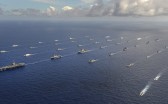
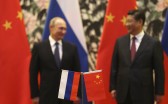
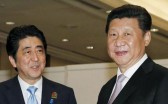
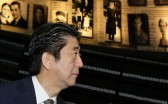
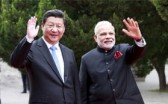
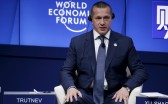
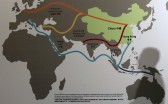


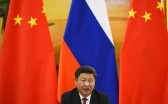
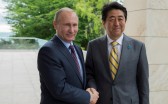
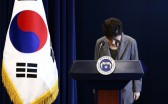
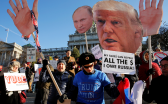
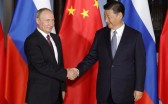
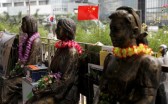
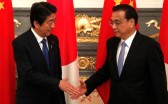
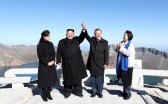
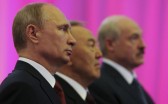
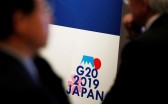

 Print
Print Email
Email Share
Share Facebook
Facebook Twitter
Twitter LinkedIn
LinkedIn